Within the serene streets of Kyoto, the whispers of ancient tales echo through time, inviting curious minds to uncover the mystique of Noh theatre. As one immerses themselves in the intricate dance of tradition and innovation, a question arises – how has this art form managed to traverse centuries, evolving yet retaining its essence?
The allure of Noh theatre beckons, promising a journey that transcends mere observation, offering a glimpse into a world where masks speak volumes, and silence holds profound significance.
Just The Basics

- Immerse in evolving noh culture in Kyoto
- Witness private noh performance with traditional attire
- Explore ancient art of noh outside Kyoto
- Engage with noh theater master and learn about art evolution
Here's some other great tours and experiences nearby we think you'll like.
Noh Theatre Origins and Evolution
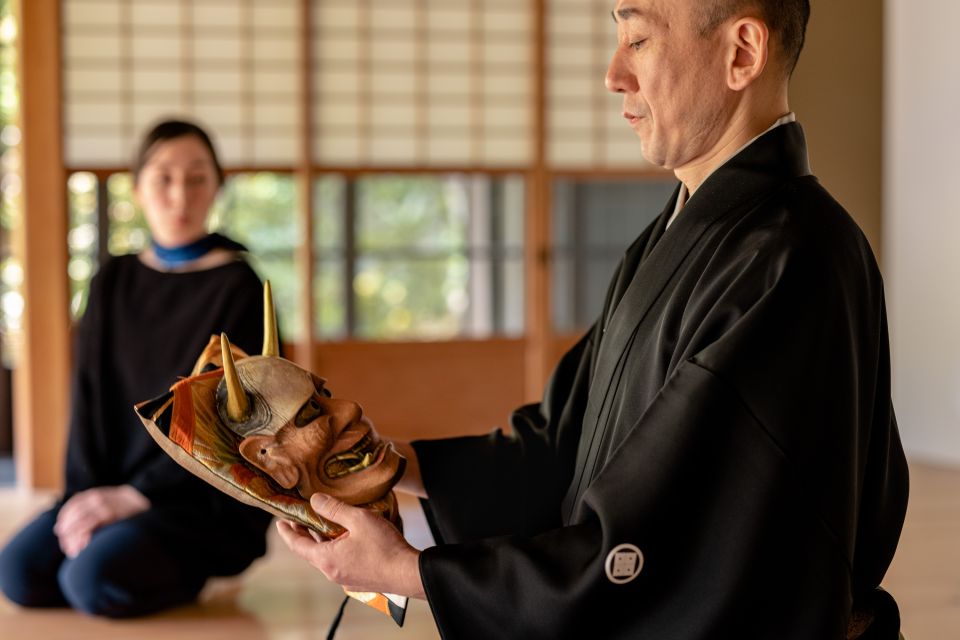
The evolution of Noh Theatre spans centuries, offering a fascinating journey through the origins and development of this traditional Japanese art form. Noh Theatre has deep roots in the preservation of ancient Japanese cultural heritage, with its origins dating back to the 14th century.
Despite its traditional essence, Noh Theatre hasn’t been immune to modern influences. Over time, contemporary elements have subtly infused themselves into the art form, enriching its performances and making them relevant to modern audiences.
The delicate balance between preserving the authenticity of Noh Theatre while incorporating modern influences highlights the adaptability and timelessness of this art form. This fusion of tradition and innovation contributes to the continued allure and significance of Noh Theatre in today’s world.
Private Performance With Traditional Costumes
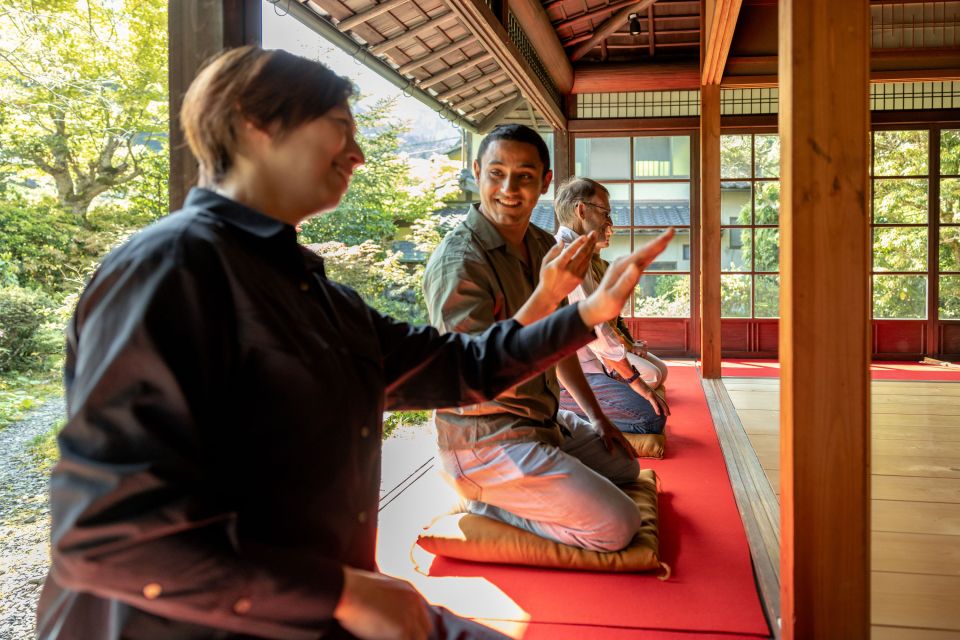
Exploring the rich heritage of Noh Theatre, one can witness the mesmerizing allure of private performances adorned with traditional costumes. These traditional performances offer a unique opportunity for culture, allowing participants to explore the essence of Japanese heritage through the art of Noh. The intricate designs of the costumes and masks add depth to the storytelling, enriching the experience with centuries-old traditions. Engaging with the performers in this intimate setting provides a deeper understanding of the nuances of Noh Theatre, showcasing the artistry and skill required to master this ancient form of expression.
| Traditional Performances | Cultural Immersion |
|---|---|
| Rich Heritage | Unique Opportunity |
| Intricate Designs | Intimate Setting |
| Centuries-Old Traditions | Artistry and Skill |
Immersive Noh Experience in Kyoto
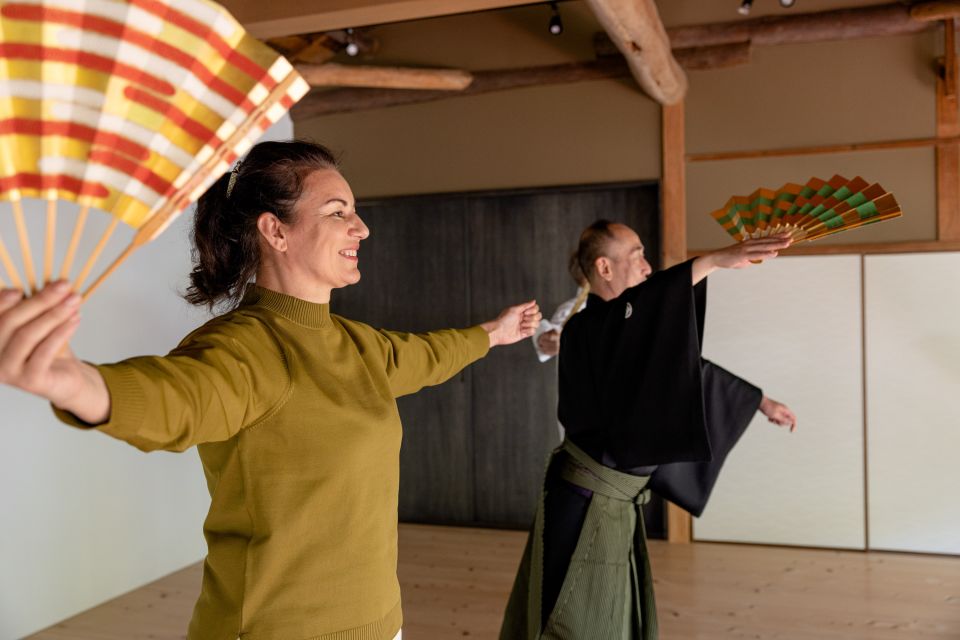
Embark on an immersive journey into the world of Noh Theatre in Kyoto, where ancient traditions intertwine with modern interpretations, offering a captivating glimpse into Japan’s cultural tapestry.
Explore the intricate Noh theater techniques that have been meticulously preserved since the 14th century, witnessing firsthand the deep cultural significance embedded in every movement and chant.
As you engage in the immersive experience, you’ll gain a profound appreciation for the art form’s evolution and its recognition by UNESCO.
This journey won’t only allow you to witness Noh performances but also to understand the essence of Japanese heritage through the lens of this traditional art.
Prepare to be transported to a realm where history, art, and spirituality converge in a harmonious blend.
Noh Art Master Insights
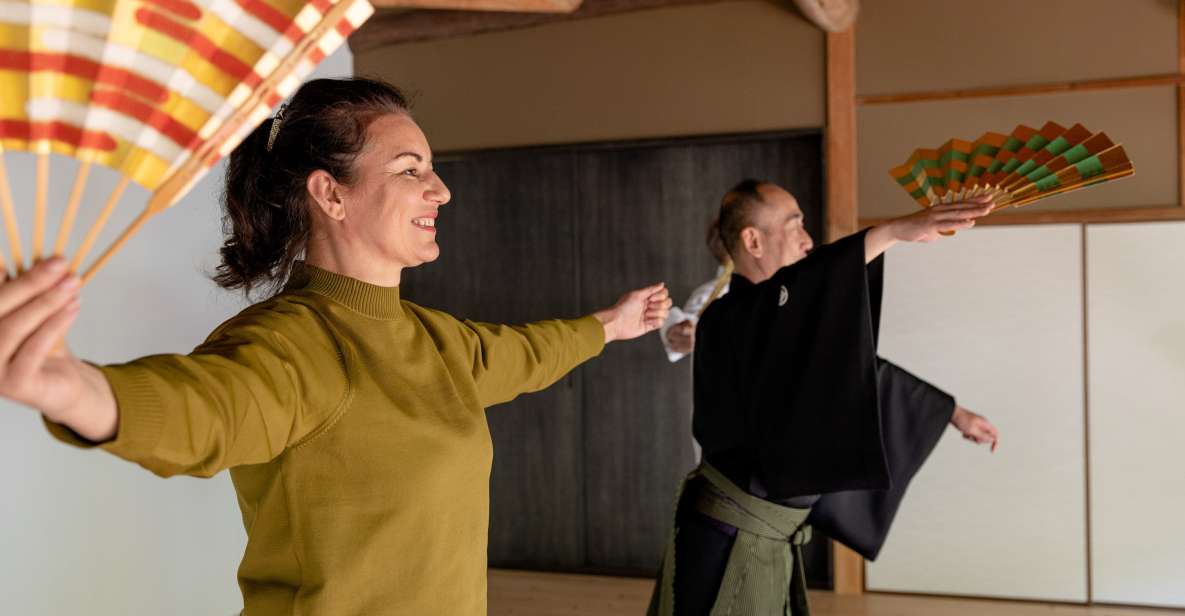
Delving into the realm of Noh artistry, one uncovers profound insights from the experienced masters, shedding light on the intricate nuances of this ancient Japanese performance tradition. These master teachings not only explore the technical aspects of Noh theatre but also carry the weight of preserving a rich cultural heritage that has been passed down through generations.
Through conversations with Noh art masters, one can gain a deeper understanding of the spiritual and philosophical foundations that underpin this art form, transcending mere performance. The wisdom imparted by these masters goes beyond the stage, offering a glimpse into the essence of Japanese traditions and the profound impact of Noh theatre on the country’s cultural landscape.
Exploring Noh Culture Beyond Kyoto
As one ventures beyond Kyoto, a deeper layer of Noh culture unveils itself, enriching the understanding of this traditional Japanese art form. Noh theater thrives not only in Kyoto but also in bustling cities like Tokyo and Yokohama. These urban centers offer modern interpretations of the noh tradition, blending ancient artistry with contemporary storytelling.
In Tokyo, one can witness innovative performances that push the boundaries of classic noh theater while still honoring its historical essence. Yokohama provides a unique perspective, where traditional noh elements merge with the city’s vibrant energy, creating a dynamic cultural experience. Exploring noh culture beyond Kyoto opens doors to diverse expressions of this time-honored art form, showcasing its adaptability and continued relevance in today’s society.
Noh Theatre UNESCO Recognition
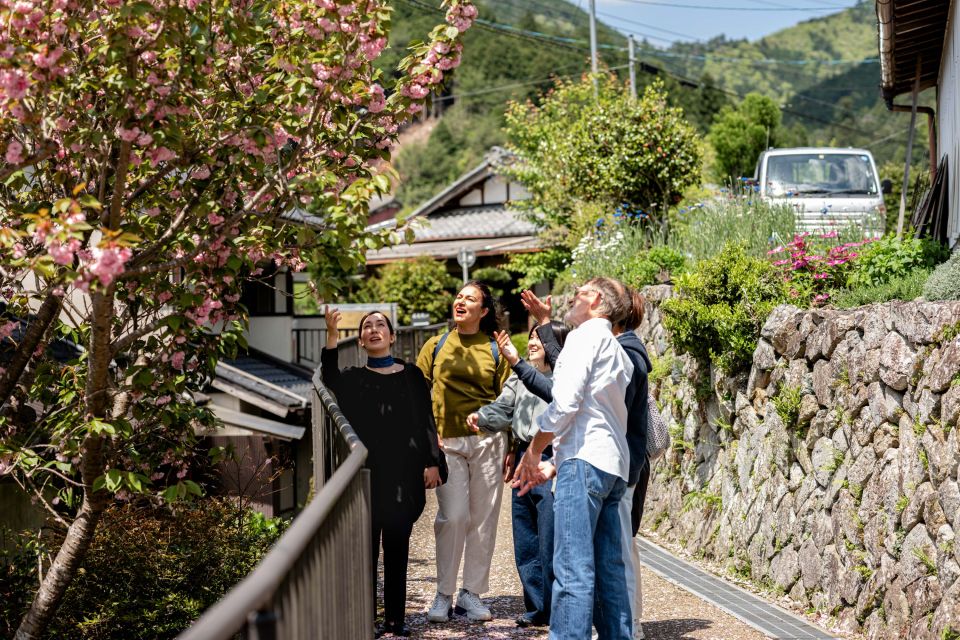
Venturing beyond Kyoto reveals a deeper layer of Noh culture, shedding light on the UNESCO recognition of this traditional Japanese art form. The UNESCO recognition of Noh Theatre signifies its enduring cultural significance on a global scale. This acknowledgment highlights the art form’s unique contributions to humanity’s heritage. Noh Theatre’s UNESCO recognition serves as a testament to its ability to transcend borders and connect people through its rich history and profound artistic expression.
-
Preservation: UNESCO recognition ensures the preservation of Noh Theatre for future generations.
-
Cultural Exchange: The recognition fosters cultural exchange by showcasing the importance of Noh Theatre worldwide.
-
Legacy: Noh Theatre’s UNESCO status solidifies its legacy as a vital component of Japan’s cultural heritage.
Traditional Noh Chant and Dance
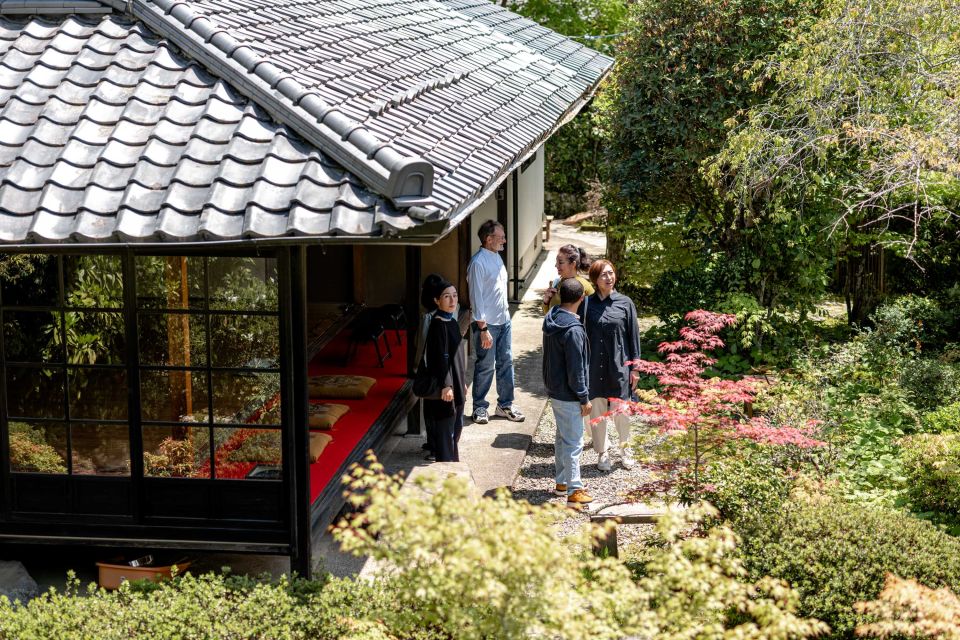
Immersing oneself in the world of Traditional Noh Chant and Dance unveils a mesmerizing blend of ancient artistry and cultural storytelling. Noh, with its origins dating back to the 14th century, holds immense cultural significance in Japan. Master techniques passed down through generations are showcased in the intricate movements and haunting melodies of Noh performances. The traditional chant and dance in Noh Theatre are meticulously designed to evoke emotions and immerse the audience in a world of spiritual depth and historical tales. The table below highlights the essence of Traditional Noh Chant and Dance:
| Master Techniques | Cultural Significance | Artistry Balance |
|---|---|---|
| Intricate Movements | Historical Tales | Spiritual Depth |
| Haunting Melodies | Emotive Experience | Ancient Traditions |
| Symbolic Gestures | Community Connection | Timeless Beauty |
Enhancing Noh Experience With Local Delicacies
Enhancing the Noh experience with local delicacies adds a flavorful layer to the culture, creating a sensory journey through traditional flavors intertwined with artistic performances. When exploring the world of Noh Theatre in Kyoto, indulging in local cuisine and participating in a traditional tea ceremony can elevate the overall experience.
Here are a few ways in which local delicacies can enhance your Noh experience:
- Savoring authentic Kyoto cuisine between performances
- Participating in a traditional tea ceremony with Noh performers
- Enjoying seasonal delicacies in the serene ambiance of a Noh Master’s garden
Frequently Asked Questions
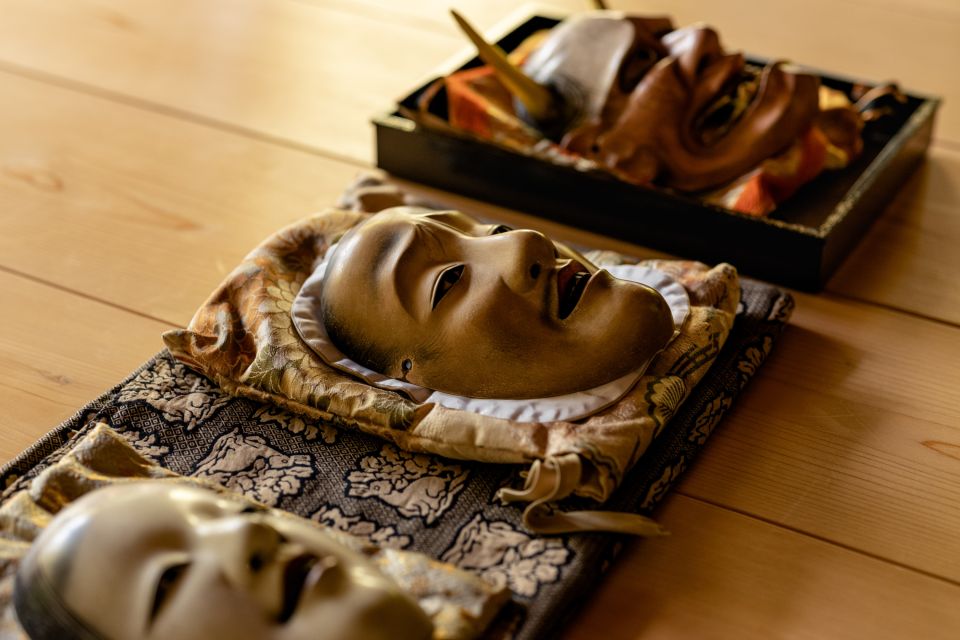
Can Participants in the Kyoto Noh Theatre Experience Try on the Traditional Costumes and Masks Worn During a Noh Performance?
Participants in the Kyoto Noh Theatre Experience can try on traditional costumes and masks worn during a noh performance. Immerse in the ancient art of noh outside Kyoto, witness private performances, and learn from masters about the evolving noh culture.
Are There Any Restrictions on Photography or Recording During the Private Performance With Traditional Clothing and Masks?
Photography or recording restrictions are in place during the private performance with traditional clothing and masks. Participants are asked to refrain from capturing the experience to maintain the authenticity and sacredness of the Noh art form.
How Long Is the Typical Duration of the Immersive Noh Experience in Kyoto, From Start to Finish?
The immersive noh experience in Kyoto typically lasts around 3 hours. Participants explore the ancient art form, witnessing private performances, exploring noh culture, and learning from masters. This duration ensures a comprehensive and enriching encounter.
Are There Any Opportunities for Hands-On Learning or Participation in Noh Chant and Dance During the Experience?
During the experience, participants engage in hands-on learning with Noh chant and dance. They enjoy traditional costumes, try on masks, and receive insights from the art master. Photography restrictions ensure focus on the immersive experience.
How Does the Noh Art Master Share Insights and Knowledge About the Evolution of Noh Art During the Tour?
The noh art master imparts evolution insights by sharing historical context and cultural significance. Knowledge sharing occurs through private performances, traditional clothing, and engaging conversations. Visitors immerse in centuries-old traditions, connecting with noh’s rich heritage.
Final Words
As visitors explore the captivating world of Noh theatre in Kyoto, they aren’t only witnessing a traditional art form but also experiencing a timeless cultural legacy.
Through private performances, engaging conversations with Noh masters, and exploring the UNESCO-recognized art form, travelers are invited to embrace the beauty and depth of Noh theatre.
The rich tapestry of Japanese heritage is woven into every aspect of this ancient art, offering a truly immersive and enlightening experience for all who seek it.
